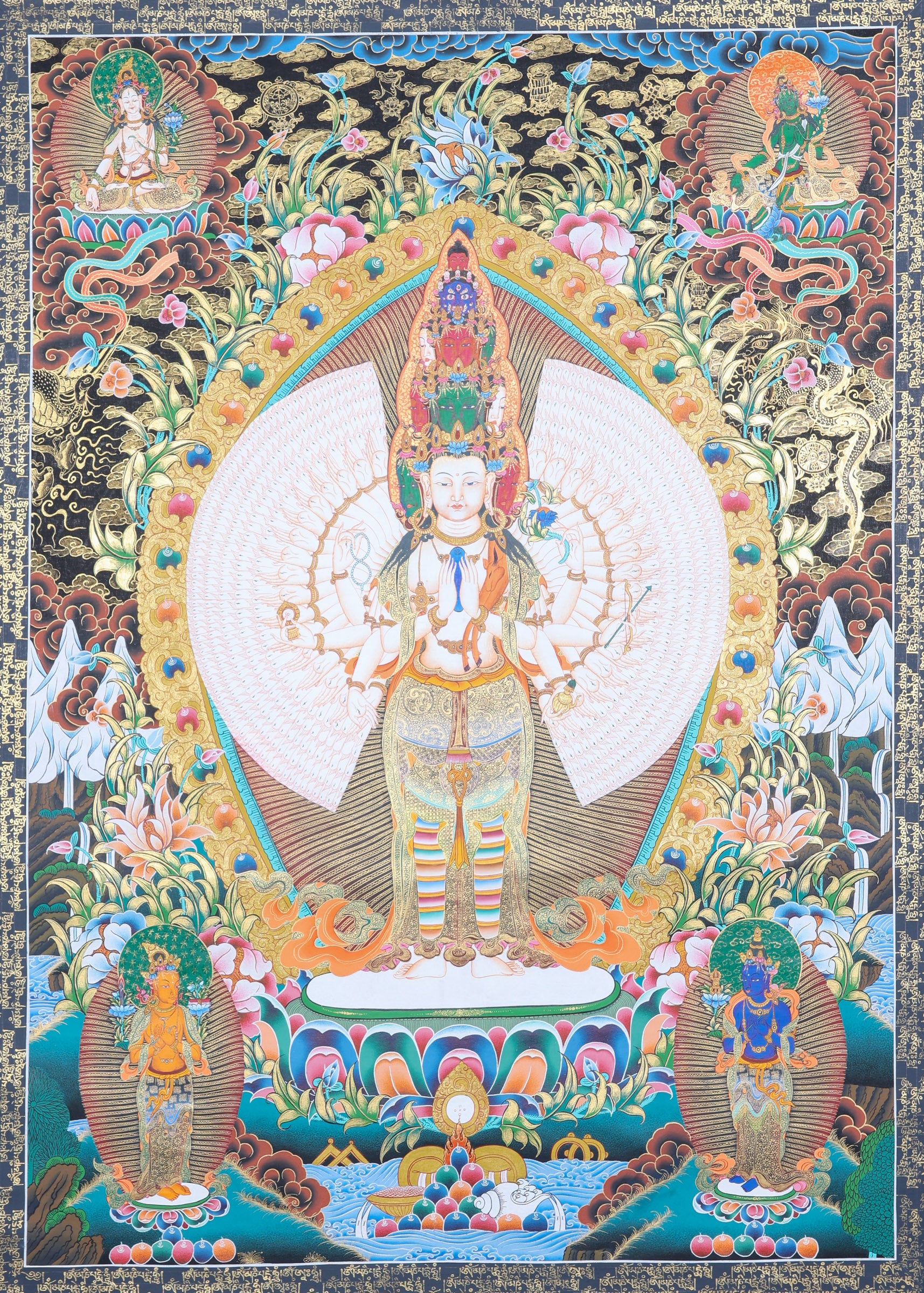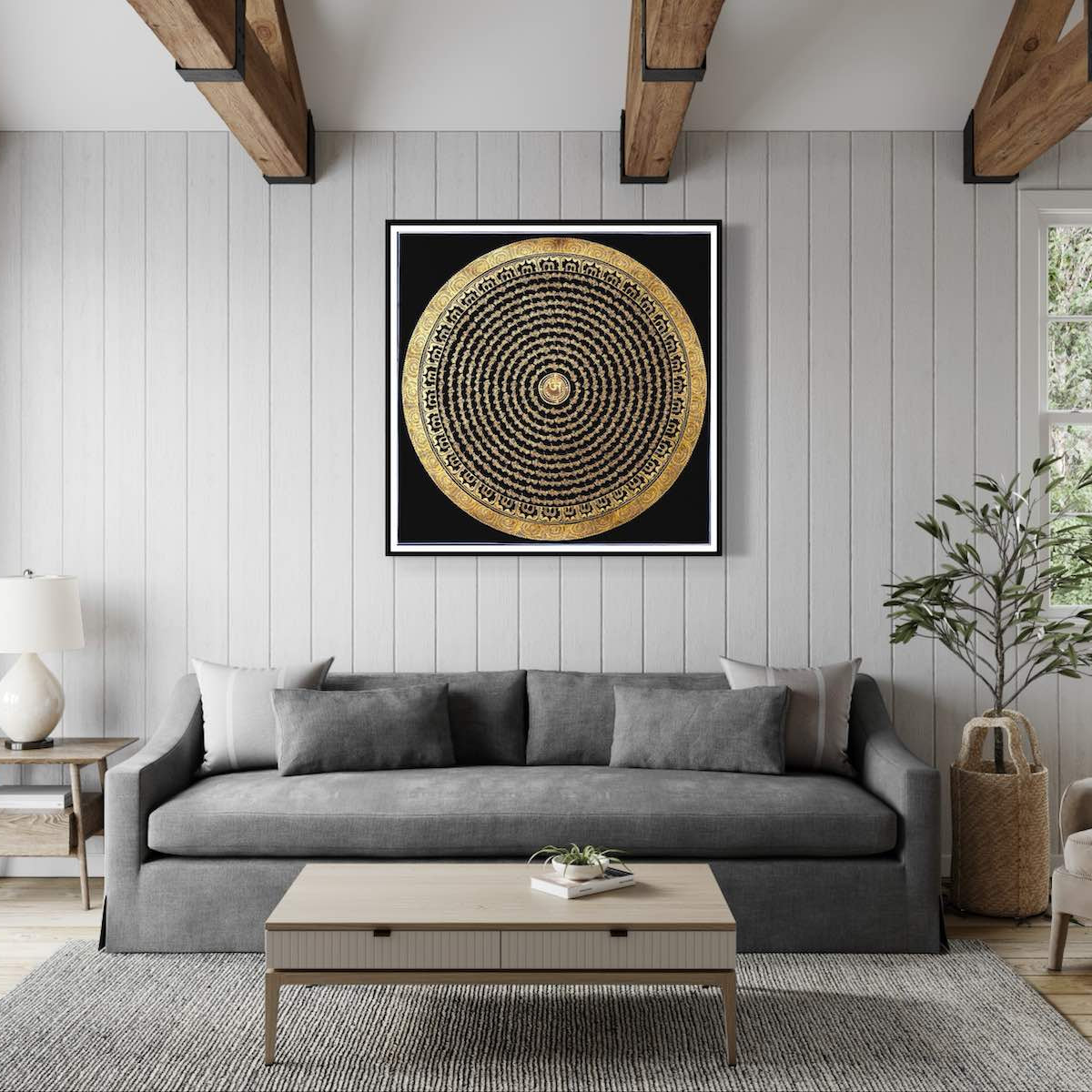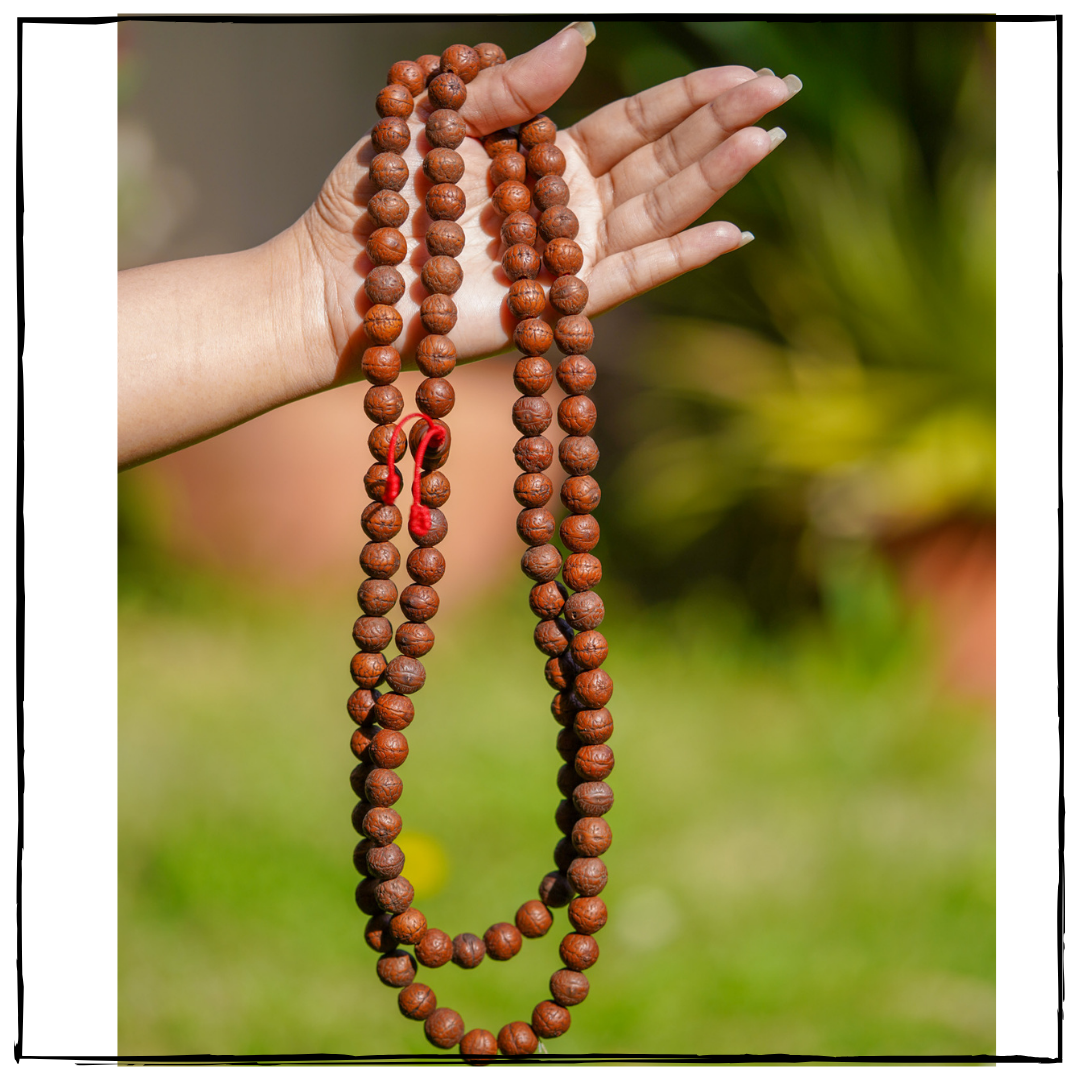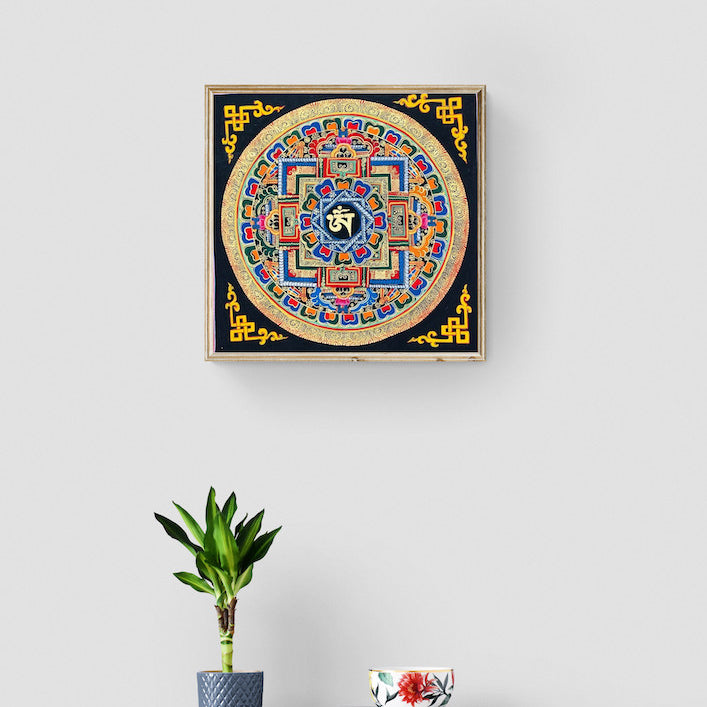Avalokiteshvara Thangka Painting
Couldn't load pickup availability
Description
This intricately-painted Avalokiteshvara thangka is crafted by a Nepalese artisan. The canvas is 100% cotton from Nepal, upon which the figure of the Great Compassion-Avalokeshwor is depicted. This deity is known as Guanyin in Japan, Kanzeon or Kannon, and Seto Machindranath in Nepal.
Avalokiteshvara, is a revered bodhisattva in Mahayana Buddhism. This Avalokiteshvara Thangka Painting is a powerful reminder of our capacity to help others, illustrating boundless compassion. Thangka artwork has been an enduring tradition in Tibetan Buddhism for centuries, being both aesthetically pleasing and an important spiritual and educational tool.
In this Avalokiteshvara Thangka Painting, he is presented with 1,000 arms arranged in a circular configuration, each carrying lotus petals, mala, and other emblems. Eleven heads, with double eyes each, are depicted to portray the bodhisattva's empathetic observation of all suffering beings. The face of the thousand-armed figure displays a tranquil, compassionate expression, signifying its solemn commitment to assist all sentient creatures. Thangka artworks of this version of Avalokiteshvara are often adorned with sacred mantras, emblems, and elaborate designs to convey deeper spiritual meaning.
Product Description:
- Hand Painted
- Materials : Semi-Precious Natural Minerals
- Base: Cotton Canvas
- Origination: Nepal

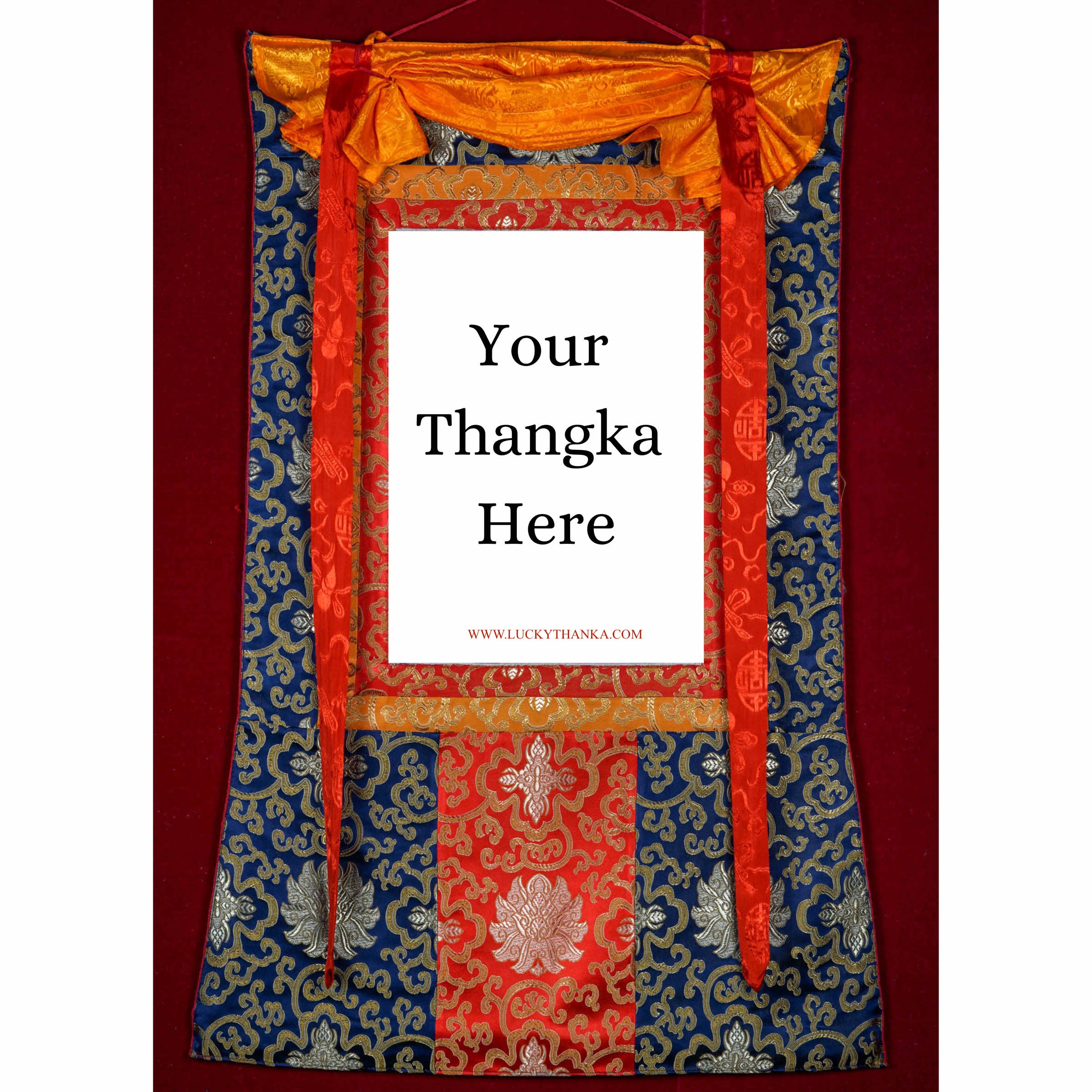

Hand Embroidery Brocade
Want to add a Brocade to your beautiful Thangka Painting? Traditional Style Brocade has been one of the most popular form of mounting as it has a greater religious merit.
Note: Make sure you have added the Thangka to your cart first.
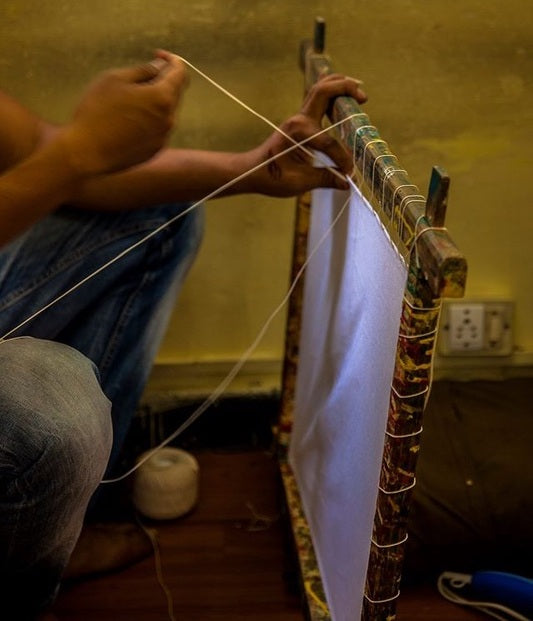
100% Cotton Canvas
Preparing the Cotton canvas before starting to paint a Thangka. This process includes washing, drying, stretching, sizing and everything needed to make a perfect base for the thangka to last for centuries.
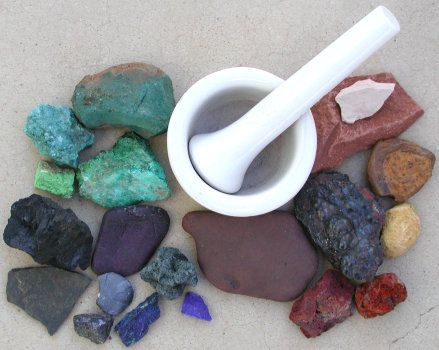

Natural Minerals
Thangka Paintings are painted using the natural minerals. These are firstly grind into the powder form and then used in the thangka as a paint.




